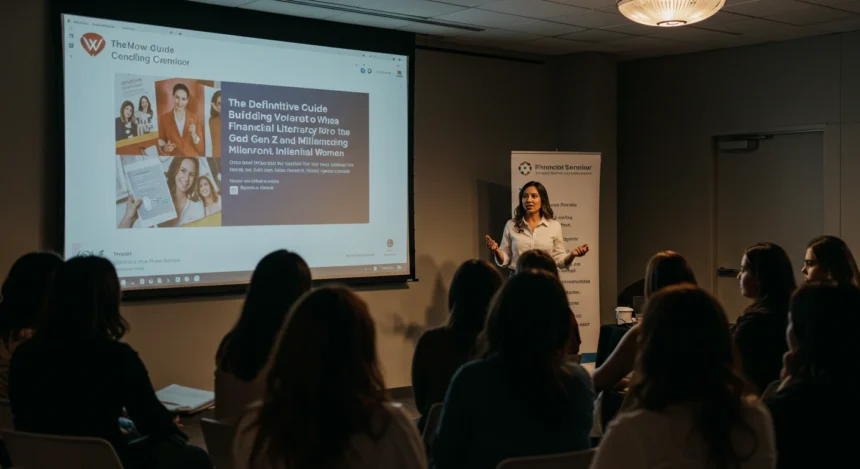Financial literacy is no longer optional it is a survival skill in today’s volatile economy. According to recent reports, Gen Z and millennial women consistently rank among the lowest groups in financial literacy tests. Yet, they also demonstrate some of the most substantial potential for rapid improvement. One promising resource that has been gaining attention in this space is Dow Janes, and the growing interest is reflected in articles such as Dow Janes Reviews, which highlight how structured guidance and practical tools can turn financial uncertainty into empowerment. Financial empowerment is especially critical as younger generations face rising student loan debt, higher living costs, and a job market that demands adaptability. Building these skills early can create long-term stability and protect against economic downturns. Women can transform financial challenges into stepping stones for independence and growth with the right resources.
The Gender Gap in Financial Knowledge
Studies consistently show a troubling gap in financial literacy between men and women, with younger women disproportionately affected. According to a FINRA Investor Education Foundation survey, only 17% of millennial women could correctly answer basic financial literacy questions, compared to 29% of their male peers. This knowledge gap is not just academic it directly impacts savings rates, investment confidence, and overall financial resilience. This is where programs like Dow Janes prove so valuable. By focusing specifically on the financial needs and challenges of women, they provide tailored resources that cut through the noise of generic financial advice. Instead of one-size-fits-all strategies, they deliver real-world guidance that helps women address structural barriers while building confidence step by step.
Core Skills Every Young Woman Needs
Five foundational skills form the backbone of financial literacy:
Budgeting with precision: A structured budget not only tracks expenses but also highlights hidden spending leaks. Apps like Mint and YNAB simplify this process, giving younger women a real-time look at their financial health. Programs like Dow Janes emphasize that budgeting is not about restriction but empowerment knowing where your money goes is the first step toward control.
Debt management strategies: From student loans to credit cards, debt is a defining feature of millennial and Gen Z finances. Understanding the snowball versus avalanche method can significantly reduce repayment time. Dow Janes often teaches women to view debt as not a permanent burden but a solvable challenge with the right strategy.
Savings and emergency funds: Building a modest emergency fund of three to six months of expenses provides a crucial safety net. Without it, one unexpected expense can derail financial stability.
Investing early and consistently: A Vanguard study shows that women who invest outperform men due to their long-term, disciplined approach. Dow Janes stresses the importance of starting small but staying consistent, since compound growth is the real wealth-builder.
Credit literacy: Credit scores influence everything from loan approvals to rental applications. Improving and protecting one’s score is a long term financial advantage.
Each of these skills can be acquired step by step, and the compounding effect of mastery leads to measurable improvements in confidence and security.
The Role of Technology in Financial Confidence
Technology has transformed the way younger generations approach financial education. Gen Z, in particular, has grown up with digital-first solutions, making fintech apps, podcasts, and online learning platforms natural entry points for financial literacy. Tools like robo-advisors and automated savings apps make investing and saving less intimidating, while TikTok and YouTube influencers are reshaping financial conversations into accessible, bite-sized lessons. Yet, not all digital resources are created equal. Research from the Pew Research Center on digital learning highlights that while online tools expand access, they also carry risks of misinformation. It is critical to pair fintech solutions with trusted, evidence-based resources, prioritizing accuracy. Dow Janes is an example of how technology and education can be combined effectively. By combining structured learning with interactive tools, the platform allows women to gain confidence while actively applying what they learn. This approach removes overwhelm and replaces it with step-by-step clarity.
Practical Steps Toward Lasting Wealth
Building lasting wealth requires moving from theory to action. Here are actionable steps that align with both short-term goals and long-term security:
- Automate savings: Direct deposits into a high-yield savings account ensure consistency.
- Diversify investments: A balanced mix of index funds, ETFs, and retirement accounts spreads risk while maximizing growth.
- Seek accountability: Partnering with a friend or joining a financial literacy group can increase follow-through. Dow Janes often encourages community-based learning, where women support each other’s progress.
- Leverage trusted resources: Institutions like the National Endowment for Financial Education offer free, research-backed tools for individuals starting their financial journeys.
- Build resilience with insurance: Health, disability, and renters’ insurance protect against catastrophic setbacks that can wipe out years of progress.
Each step builds on the other, creating a holistic approach where small wins compound into long-term financial freedom. The data proves this approach works: women who regularly engage in structured financial education programs report up to a 27% increase in confidence and knowledge retention compared to those who do not.
Conclusion
For Gen Z and millennial women, financial literacy is more than just balancing a budget it’s about creating independence, resilience, and peace of mind. While the statistics highlight fundamental gaps, they also illuminate extraordinary opportunities for progress. With resources like Dow Janes providing step by step strategies, digital tools enhancing accessibility, and communities supporting accountability, younger women can transform their financial trajectory and close the literacy gap for good.






